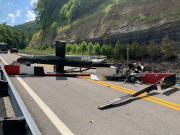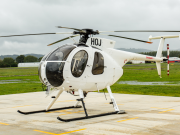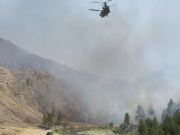Inspections have revealed premature exhaust valve and valve guide wear in a number of Robinson R22 and R44 helicopters used primarily in livestock mustering in northern Australia, according to Australia’s Civil Aviation Safety Authority (CASA).
In Airworthiness Bulletin (AWB) 85-025, issued earlier in December, CASA said that it is working with other government agencies and an industry working group to identify the cause of the problem, which has affected R22s with Lycoming O-360 engines and R44s with Lycoming O-540 engines. The focus has been on the way the helicopters are operated, possible fuel issues, carburetor set up and failure modes, CASA said.
“It has also been speculated that during extended ground operations at low manifold pressure and high rpm, the intake valve rocker arm oil is migrating down the valve stem and accumulating on the head/induction side of the valve, leading to coking and carbon buildup,” the AWB said. “The accumulated deposits are subsequently ignited with a flash-off event, causing valve and/or valve seat damage (erosion). This enables combustion to continue past the unsealed intake valve into the intake manifold with a percentage of the fuel-air mixture being consumed within the manifold, causing an induction backfire leading to power loss and airframe yaw.”
Laboratory analysis performed by Lycoming has shown that engine oil is the source of the carbon deposits, the AWB said, adding that Lycoming has said that although the problem has been reported around the world, “a higher proportion” of reports have come from Australia.
The helicopters are safe to operate if they are flown within operating limitations, CASA said, adding that this lowers peak combustion temperatures.
he AWB included several recommendations, including compliance with operating limitations and avoidance of hot loading — “extended ground operations of the engine above 70 to 75 percent rpm with collective at flat pitch/fully down.” Other recommendations called for “strict adherence to the aircraft and engine manufacturer’s maintenance schedule” and for conducting a cylinder borescope inspection along with the differential pressure test.
All instances of premature intake valve and valve seat degradation should be reported to CASA using the DRS system on the CASA website, the agency said.



